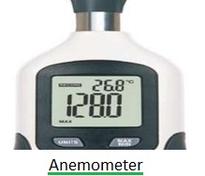Dry Bulb vs. Wet Bulb Temperature: A Comprehensive Guide
Advertisement
This article explores the concepts of dry bulb temperature and wet bulb temperature, two key measurements used to understand the moisture content of air. Both temperatures are measured using thermometers, but they reveal different aspects of the air’s condition. These measurements are crucial in determining relative humidity, a critical factor in various fields, from meteorology to HVAC (Heating, Ventilation, and Air Conditioning).
How to Measure Humidity
Before diving into the specifics of dry and wet bulb temperatures, let’s quickly review how humidity can be measured. There are several methods:
- Cooling and Weighing Moisture: Air is cooled to condense water, and the amount of water collected is measured.
- Chemical Absorption: Moisture is absorbed by a chemical substance, and the change in the substance’s properties is analyzed.
- Infrared (IR) Spectroscopy: The absorption of infrared light by water vapor is measured to determine its concentration.
- Sling Psychrometer: A device that uses both dry and wet bulb thermometers, which we’ll discuss in detail below.
- Correlation with Other Properties: Some properties, like thermal conductivity, change with humidity and can be used as an indirect measurement.
Dry Bulb Temperature
- Dry bulb temperature is simply the temperature of the air-water mixture as measured by a standard thermometer.
- The thermometer is exposed to the air and shielded from moisture and radiation to ensure an accurate reading of the air’s temperature alone.
- We can represent dry bulb temperature as T
db. It’s the temperature you’d typically see when checking the weather or looking at a standard thermometer.

Wet Bulb Temperature
- Wet bulb temperature is measured by a thermometer that has its bulb covered with a wet cloth.
- The evaporation of water from the cloth cools the thermometer, causing the wet bulb temperature (T
wb) to be lower than the dry bulb temperature (Tdb). - The amount of cooling depends on how dry the surrounding air is. The drier the air, the more water evaporates, and the lower the wet bulb temperature becomes.
- An interesting point: When the relative humidity (RH) reaches 100%, T
dband Twbbecome equal. This is because at 100% RH, no water can evaporate, so the wet bulb thermometer doesn’t cool. - Wet bulb temperature can be calculated by modeling the process of adiabatic saturation.
Key Differences Summarized
| Feature | Dry Bulb Temperature (T | Wet Bulb Temperature (T |
|---|---|---|
| Measurement | Standard thermometer exposed to air | Thermometer with a wet cloth covering the bulb |
| Reading | Temperature of the air itself | Temperature lowered by evaporative cooling |
| Relationship | Usually higher than or equal to wet bulb temperature | Usually lower than dry bulb temperature, equal at 100% RH |
| Primary Use | Basic air temperature measurement | Indicates moisture content of the air and can be used to calculate RH |
Advertisement
 T&M
T&M 






